Portuguese Sweet Bread Recipe
I’m a sucker for carbalicious bread, in any form.
Tell me you have a loaf of Portuguese Sweet Bread (or as the Portuguese call it: Pao Doce) hot out of the oven and I’m in!
I’ll bring the butter! You get the knife!
 Is It Easy?
Is It Easy?
This Portuguese bread recipe is not a quick bread.
Quick breads are fast and easy.
You mix ingredients in a bowl, pour into a pan, bake. them BAMMO! hot and delicious bread.
Just like my Zucchini Bread Recipe.
This recipe is easy, but not fast.
If you haven’t made it – what are you waiting for?
Sweet Bread Recipe
This particular sweet bread recipe is a yeast bread.
When you bake bread using yeast, the dough requires time to rise.
Not only does this recipe require yeast, but it also needs two risings.
WAIT!
Don’t go!
While two risings may seem complicated, it’s not and the time taken is totally worth the effort.
Trust me when I say, you are going to want to make this bread (or have someone make it for you!).
Portuguese Sweet Bread
Have you heard of Portuguese Sweet Bread?
It also goes by the name of Pao Doce.
Have you ever had it?
If you answered “yes” then you’re smiling and wishing you had some RIGHT NOW!
If you answered “no” then you’re in for a light, buttery, addictive addition to your baking arsenal of recipes to cherish.
That’s right, cherish.
It’s that good.
LOOK AT IT!!!!
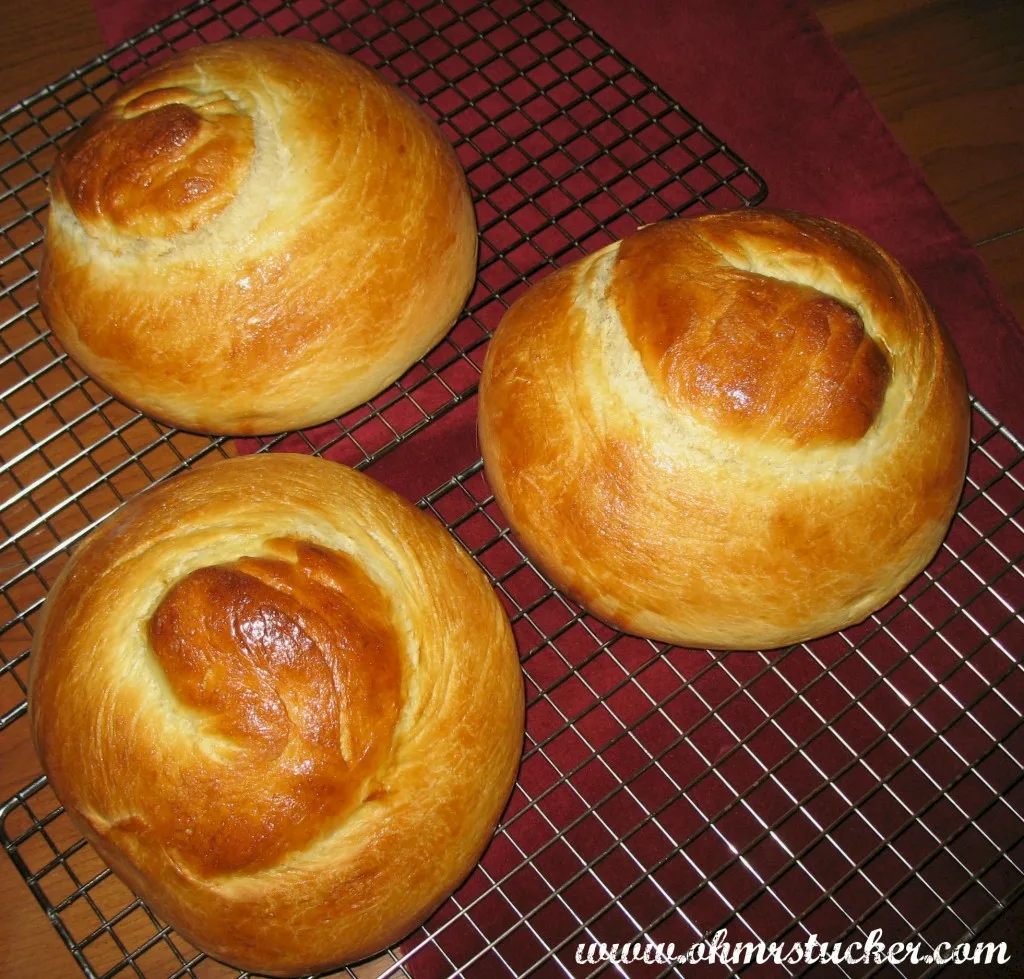
The Many Names Of Portuguese Sweet Bread
As with many things in life, lots of folks call one thing by many names.
If you see any of these names, know it’s still Portuguese Sweet Bread:
- Paozinho Doce
- Pao Doce
- Hawaiian Bread
- Snail Bread
- Massa Sovada
Snail Bread
Um, what? Snail bread?
Head’s up: in our house we call Pao Doce: Snail Bread.
I’m sure you can guess why.
See that top knot of the snail?
SNAIL BREAD!
You gotta be fast, because that’s the part that everyone wants to eat.
It’s crusty sweet on the outside, yet light and almost like eating butter-flavored air on the inside.
These knots have been known to disappear on full, uncut, loaves.
“NOOOOOOO!” says the too-slow top knot snatcher.
How Do You Like Your Sweet Bread?
Yep, just because a recipe calls for a loaf or rolls, you can do what you want – you’re the boss of you!
Just realize if the recipe calls for loaves, you’ll want to decrease baking time for smaller rolls, or if the recipe calls for rolls and you’re going rouge by making a loaf, you’ll want to increase your baking time.
Small Or Large
Smaller rolls or larger loaves?
We like the larger loaves (and I’ll tell you why is just a sec), but there are bonuses to the smaller rolls.
Hawaiian Bread
Smaller Pao Doce rolls are basically Hawaiian rolls!
You can easily serve the rolls from a basket, while the loaves need to be sliced.
Works perfectly for an elegant meal or a BBQ.
The major bonus with making the rolls vs loaves, is ever’one gets their own personal knot!
Why Make Portuguese Sweet Bread As A Loaf?
There is something amazing about placing a loaf of this sweet bread on a table and watching all eyes drawn to the beauty of freshly baked bread.
It slices easily and works for a savory meal or brunch.
Or, if you are part of a community table, you can always do the tear and serve method.
SOMEONE GRAB THE KNOT!
Hawaiian Roll French Toast
Portuguese Sweet Bread French toast = French toast Heaven!
THIS.
This is the main reason to make the larger loaves.
Need I say more?
Oh, momma. This bread takes French Toast to a whole ‘nutha lebel!
Slice the loaf thin or thick, depending on your cravings.
Dip the slices into an egg wash and cook in a hot pan with melted butter.
Once cooked, the toast is amazing as is, but if you decide to drizzle warmed maple syrup or dust it with confectioner’s sugar, please be seated before taking the first bite.
Cause you may actually see Jesus.
No lie.
When life is popping you in the kisser and you need a change of perspective, or when life is sweet and you simply want to add a layer of awesome sauce, it’s nirvana good (not the band – the transcendent state).
French Toast Calories
No, people, just no.
When you are living properly, you will NOT count the calories in this French toast.
Let that go for another day.
Today you live!
How Long To Let The Dough Rise
Let the dough rise properly.
The hardest part of the recipe is waiting for the double rise.
The total time for letting the dough do its thang is about 2.5 hours.
That’s nothing when compared to the joy the finished product will bring you.
Why Does This Bread Dough Have To Rise Twice?
- A double rise prevents those huge air holes you can see in homemade bread.
- Dough allowed to rise twice has a finer gluten structure, meaning the crumb is finer and lighter.
- It’s a test of yer willpower. HANG IN! You can do this!
Baking With Yeast
Don’t be afraid of baking with yeast.
Yeast gets a bad rap with beginner bakers. The word yeast is intimidating – I know!
There’s no reason to be hesitant to make a yeast bread.
Don’t listen to the folks that tell you it’s too hard; it’s not!
The main thing is to proof your yeast BEFORE you start mixing anything else.
That way you know if your yeast is good or not.
How To Proof Yeast.
First of all, what the heck does “proofing yeast” mean?
Simple.
It’s the process of adding hot water to your yeast to see if it starts to bloom (basically bubble a bit and grow in your bowl).
It will look similar to this:
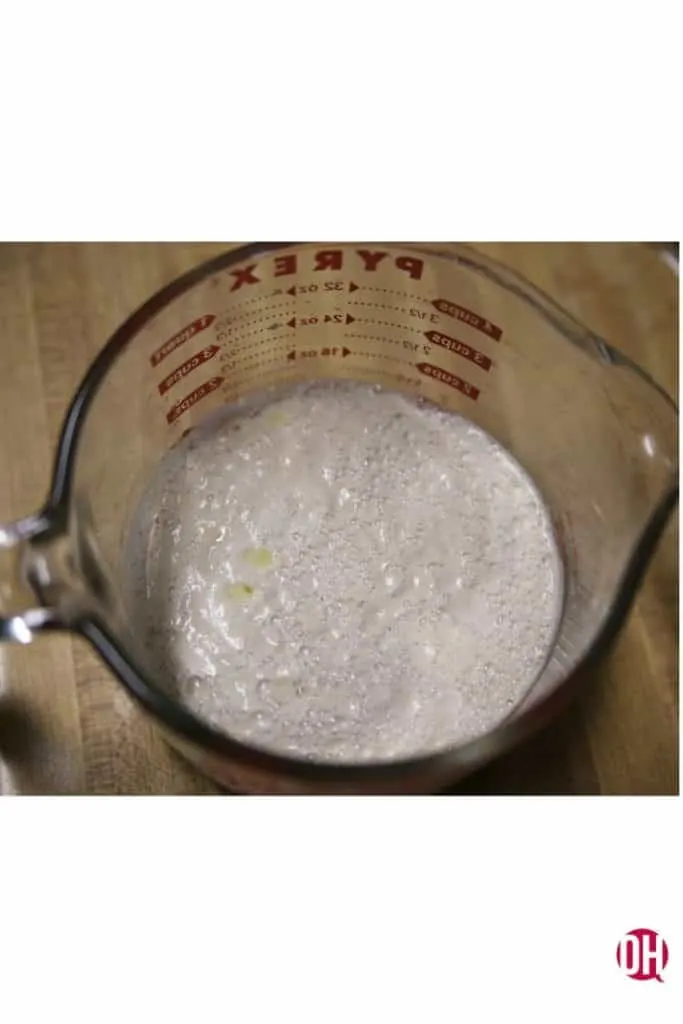
So bubbly!
You proof by adding the hot water to your yeast, add a bit of salt or sugar for it to eat, stir well, and wait for it to bloom.
If you don’t see any difference in the mixture in five minutes, your yeast isn’t good.
How To Activate Yeast
The best yeast activation temperature or how to activate yeast:
The temperature of your hot water is key to properly getting yeast to grow.
Water that’s too hot, above 138°F, will kill yeast.
Water that is too cool, below 70°F, will not be warm enough to get the yeast to budge.
The water temp has to be just right.
My Method To Test Water Temps Has Rarely Failed Me
#1: Run your tap for hot water.
#2: Place your wrist under the running water.
#3: right before you have to remove your wrist because the water is HOT, that’s the temp that will get yeast to poppin’!
See? Simple!
Once you know your yeast is good, the rest of the recipe is a veritable breeze.
Homemade Bread
Once you make Portuguese Sweet Bread, you’re hooked for life!
My favorite warm snail bread topping is slow cooker apple butter.
Don’t like apples? How about pear butter?
Decadence squared.
While the bread is a slice O’Heaven right out of the oven, it’s also amazing toasted or at room temp with an actual meal like a civilized person.
One thing I love about this recipe is that if I’m giving it as a gift (Boy loves this bread), there’s always an extra roll for my efforts!
I know, I really need to work on being selfless, but this bread gets in your head, people.
I dare you to make a batch without becoming a snail bread hoarder.
Get to baking, my lovelies!
If you prefer a printable recipe, I’ve included one below, at the end of this post.
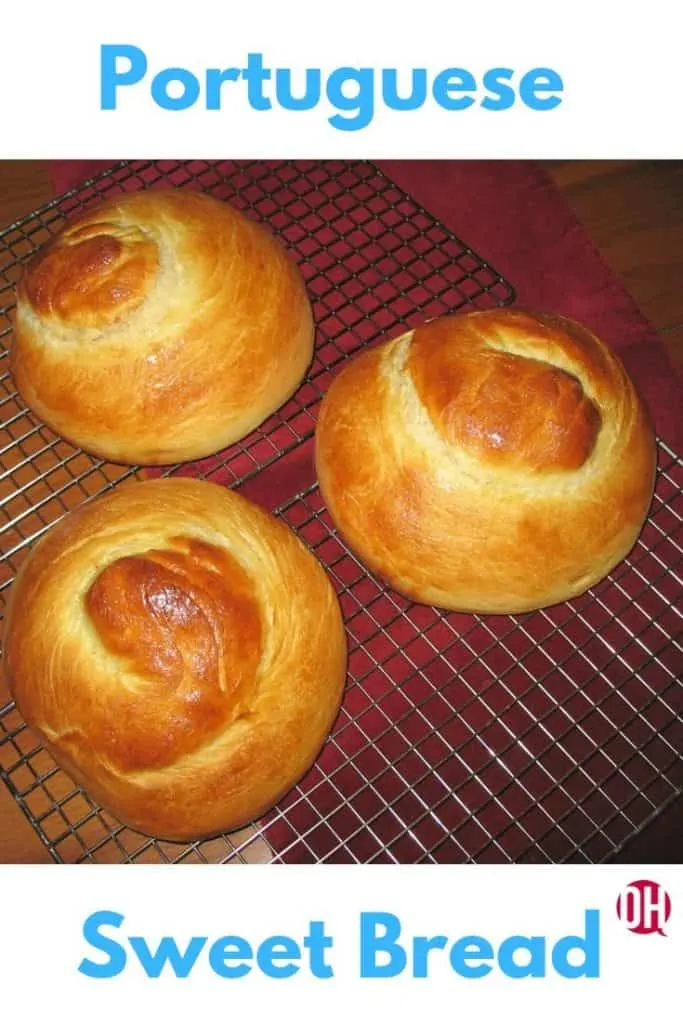
Portuguese Sweet Bread Recipe
Ingredients:
- 2 packages active dry yeast
- 1/4 cup warm water (105-115°)
- 1 cup lukewarm milk (scalded, then cooled)
- 3/4 cup sugar
- 1 teaspoon salt
- 3 eggs
- 1/2 cup butter, softened
- 5 1/2-6 cups all-purpose flour
- 1 egg
- 1 teaspoon sugar
Instructions:
- Dissolve yeast in warm water in a large bowl.
- Stir in milk, 3/4 cup sugar, 3 eggs, salt, butter, and 3 cups of flour.
- Beat until smooth.
- Stir in enough of the remaining flour to make the dough easy to handle.
- Knead dough on a lightly floured surface until smooth and elastic, about 5 minutes.
- Place in a greased bowl and let rise in a warm place until it is double in size, about 1 to 1 1/2 hours. (dough is ready if indention of finger remains when poked)
- Punch down dough and divide in half.
- Roll each half into a rope, then coil each to form a snail shaped.
- Place each “snail” in greased round cake pan.
- Cover and let rise until double (about 1 hour).
- Heat oven to 350°F.
- Beat 1 egg and brush over tops of loaves.
- Sprinkle with 1 teaspoon of sugar.
- Bake until loaves are golden brown, about 35-45 minutes.
Notes For Sweet Bread:
* Instead of forming each half into snails, shape each half into a round, slightly flat loaf. Place each loaf in a greased round cake pan and proceed as directed.
* Preheating the oven is important when baking bread, as the initial heat-burst helps to “lift” the bread.
* Sometimes I make 4 smaller loaves instead of two bigger ones. Decrease bake time if you do this.
* Not sure the bread is done? Knock on the top and if it sounds hollow, it’s done!
* Recipe: Betty Crocker‘s International Cookbook
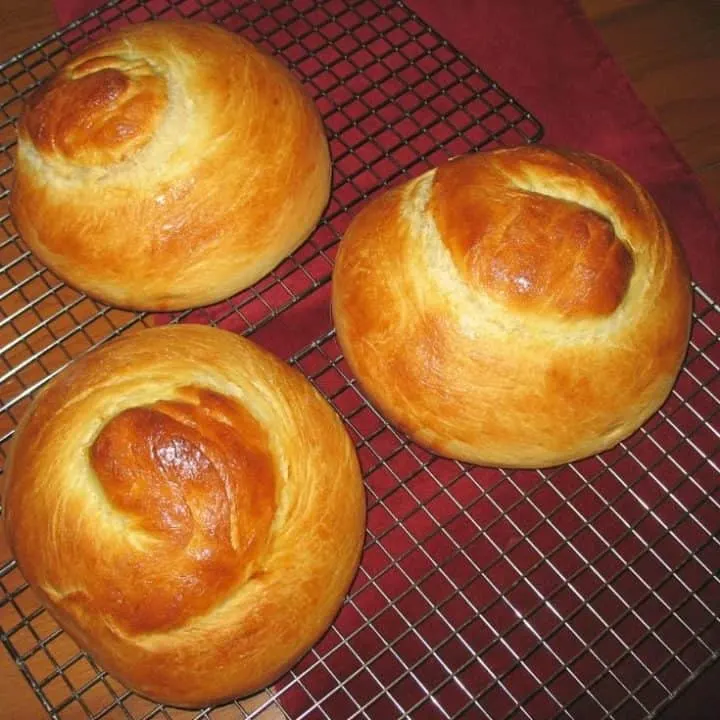
Portuguese Sweet Bread
Ingredients
- 2 packages active dry yeast
- 1/4 cup warm water (105-115°)
- 1 cup lukewarm milk (scalded, then cooled)
- 3/4 cup sugar
- 1 teaspoon salt
- 3 eggs
- 1/2 cup butter, softened
- 5 1/2-6 cups all-purpose flour
- 1 egg
- 1 teaspoon sugar
Instructions
- Dissolve yeast in warm water in a large bowl.
- Stir in milk, 3/4 cup sugar, 3 eggs, salt, butter, and 3 cups of flour.
- Beat until smooth.
- Stir in enough of the remaining flour to make the dough easy to handle.
- Knead dough on a lightly floured surface until smooth and elastic, about 5 minutes.
- Place in a greased bowl and let rise in a warm place until it is double in size, about 1 to 1 1/2 hours. (dough is ready if indention of finger remains when poked)
- Punch down dough and divide in half.
- Roll each half into a rope, then coil each to form a snail shaped.
- Place each "snail" in greased round cake pan.
- Cover and let rise until double (about 1 hour).
- Heat oven to 350°F.
- Beat 1 egg and brush over tops of loaves.
- Sprinkle with 1 teaspoon of sugar.
- Bake until loaves are golden brown, about 35-45 minutes
Notes
* Instead of forming each half into snails, shape each half into a round, slightly flat loaf. Place each loaf in a greased round cake pan and proceed as directed.
* Preheating the oven is important when baking bread, as the initial heat-burst helps to "lift" the bread.
* Sometimes I make 4 smaller loaves instead of two bigger ones. Decrease bake time if you do this.
* Not sure the bread is done? Knock on the top and if it sounds hollow, it's done!
* Recipe: Betty Crocker's International Cookbook
Recommended Products
As an Amazon Associate and member of other affiliate programs, I earn from qualifying purchases.
-
 American Metalcraft SSB1300 Stainless Steel Mixing Bowl, 16" Diameter, Silver, 13-Quart
American Metalcraft SSB1300 Stainless Steel Mixing Bowl, 16" Diameter, Silver, 13-Quart -
 Fleischmann's, Active Dry Yeast, 4 oz
Fleischmann's, Active Dry Yeast, 4 oz -
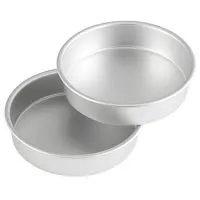 Wilton Aluminum 8-Inch Round Cake Pan Set, Multipack of 2
Wilton Aluminum 8-Inch Round Cake Pan Set, Multipack of 2 -
 Mercer Culinary M23210 Millennia 10-Inch Wide Wavy Edge Bread Knife, Black
Mercer Culinary M23210 Millennia 10-Inch Wide Wavy Edge Bread Knife, Black -
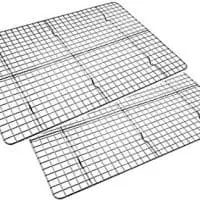 Checkered Chef Cooling Racks for Baking - Baking Rack Twin Set. Stainless Steel Oven and Dishwasher Safe Wire Cooling Rack. Fits Half Sheet Cookie Pan- set of 2
Checkered Chef Cooling Racks for Baking - Baking Rack Twin Set. Stainless Steel Oven and Dishwasher Safe Wire Cooling Rack. Fits Half Sheet Cookie Pan- set of 2
Nutrition Information:
Yield: 40 Serving Size: 1 sliceAmount Per Serving: Calories: 422Total Fat: 4gSaturated Fat: 2gTrans Fat: 0gUnsaturated Fat: 2gCholesterol: 25mgSodium: 84mgCarbohydrates: 83gFiber: 3gSugar: 4gProtein: 12g
Nutrition information isn’t always accurate and depends on size of slices.
Original post: March 10, 2014 ~ Updated post: August 30. 2024
Tired of searching for a popular OMT! recipe?
Rest yer weary fingers.
Except to click on the image.
You still have enough strength for that.
COME ON!
YOU CAN DO IT!
If you’ve made it this far, you must reward yourself by making the Portuguese Sweet Bread, the Pao Doce, the Paozinho Doce, the Hawaiian Bread (the Snail Bread!).
Doesn’t matter what you call it – just make it!
If You Liked This Portuguese Sweet Bread Recipe, Check These Posts Out:
Beer Bread Recipe Yumminess
This quick beer bread can be customized with your favorite beer. It’s light and delicious and AMAZING when toasted.
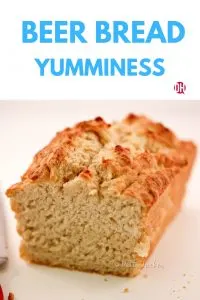
Easy Pumpkin Bread
I know, I KNOW!, most folks don’t think of pumpkin bread unless it’s fall, but we make this year round. It’s packed with antioxidants, flavor and an easy on-the-way-out-the-door breakfast for the kiddos during school time.
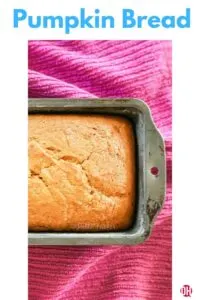
The Best Sour Cream Zucchini Bread Done Right!
Holy Moly! I think ya know that any recipe that includes sour cream is gonna knock it outta the park. This one does. My deepest apologies to any dairy abstainers.
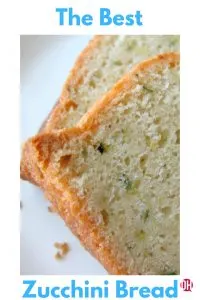
I hope you’ll try at least one of these recipes…maybe even tackle the Portuguese Sweet Bread Recipe (don’t be afraid!).
If you do, please come back and tell us about it in the comments.
Happy Baking, y’all!


Marcia
Sunday 21st of February 2021
Sounds like a good recipe and not too big. Everytime I see a recipe for sweet bread it’s usually makes a big batch. My grandmother would use the whole 5 pound bag of floor or more. She also used a little lemon extract which gave it a good taste. I’ll have to try your recipe but might add the lemon extract
Patti Tucker
Thursday 25th of February 2021
Let us know how the addition tastes!
Sandy
Saturday 7th of April 2018
I forgot to put the butter in But could I put the butter after its risen for 1-1.5 hours
Patti Tucker
Saturday 7th of April 2018
Um, not sure that would work, but at this point you have nothing to lose!
Maui Portuguese Gal
Saturday 7th of November 2015
I grew up eating Portuguese sweet bread, but never made it. I have bread flour. Would your recipe work well with bread flour instead of all-purpose flour?
Patti Tucker
Sunday 8th of November 2015
Hmmm, I've never made it with bread flour. You could definitely try it, just know that bread flour will typically give you a heavier denser loaf.
dana
Saturday 7th of June 2014
Can anyone tell me if I can substitute quick rise yeast for the regular yeast? I would love to try this bread.
Mrs. Tucker
Saturday 7th of June 2014
I have never tried it with the quick rise yeast, but a quick look through the vast Internets turned up this answer. Hope that helps.
Linda
Thursday 20th of March 2014
Thanks for the recipe! PINNED. Your friend, Linda
Mrs. Tucker
Thursday 20th of March 2014
Thanks for the share!